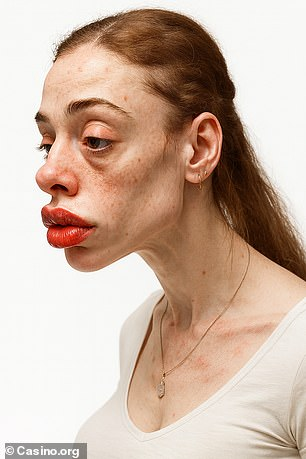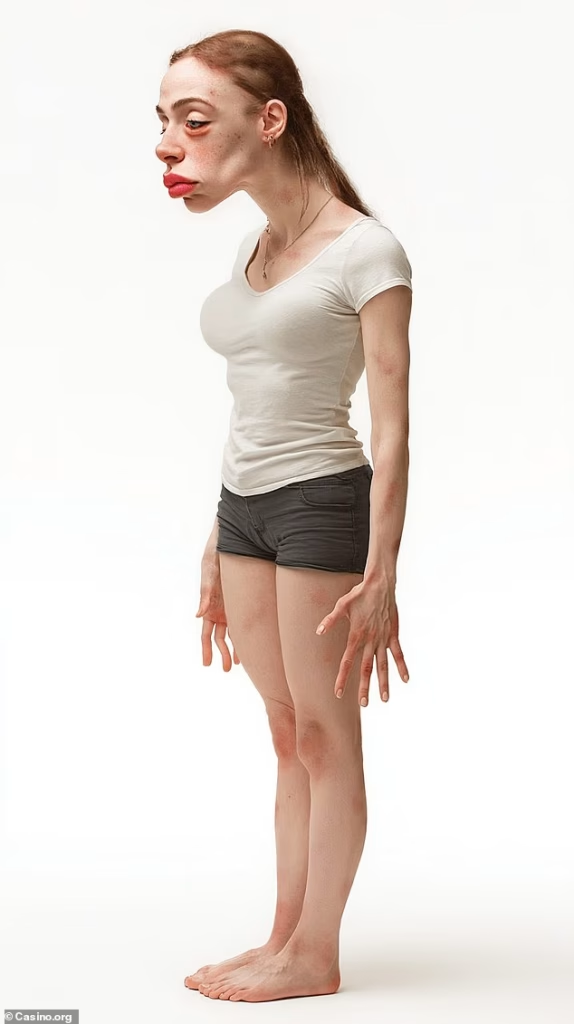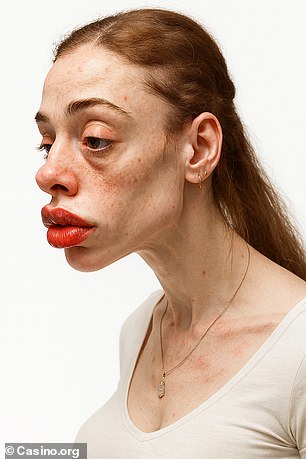Analysts at Casino.org have developed a provocative concept of what today’s social media stars might look like by 2050. Their digital model, nicknamed “Ava,” depicts a distorted, unhealthy figure with mottled skin, a hunched spine, and an exaggeratedly sharp chin — allegedly the cumulative result of modern influencer habits.
According to the creators, Ava is “both tomorrow’s influencer and today’s cautionary tale,” representing the long-term impact of algorithm-driven lifestyles, relentless beauty standards, and perpetual content production. The project suggests that behind glamorous brand trips and polished filters lies a hidden toll on the body.

Posture and Musculoskeletal Strain
Casino.org’s scenario draws on a 2023 BBC report noting that some influencers work up to 90 hours weekly, much of it bent over smartphones and laptops. In this vision of the future, Ava’s rounded shoulders, chronic neck pain, and permanent forward head tilt embody the musculoskeletal consequences of screen-centric labor.
Dermatological Damage
Heavy, prolonged makeup use — combined with constantly rotating skincare products — can trigger dermatitis, irritation, and inflammation. The model also highlights the under-acknowledged effect of LED light exposure, sometimes dubbed “digital aging,” which accelerates pigmentation changes, fine lines, and persistent skin inflammation.

Ocular Fatigue and Dark Circles
Ava’s pronounced under-eye bags reflect the long hours many influencers spend editing, livestreaming, and staring at bright screens. Experts link these behaviors not only to aesthetic changes but also to dryness, redness, blurred vision, and other chronic eye-strain symptoms.
Sleep Disruption and Hormonal Effects
Irregular work schedules and nocturnal screen time can destabilize circadian rhythms. Casino.org’s model associates this with chronic fatigue, thinning hair due to disrupted melatonin production, and swollen lower eyelids — issues often invisible behind filters but cumulative over decades.
Overuse of Fillers
Dermal fillers have become mainstream: over five million Americans reportedly received them last year. But repeated procedures and migrating product can distort facial symmetry. Ava’s puffed cheeks, “witch-like” chin, and artificially textured skin dramatize this potential overcorrection.
Hair Loss from Styling Practices
Finally, the model predicts hair loss. Years of heavy extensions, tight hairstyles, and constant “photo-ready” preparation may weaken follicles, leading to receding hairlines and bald spots that are difficult to reverse.
A Critical Perspective
While Ava makes for compelling click-bait, it’s worth noting the speculative nature of these claims. The model extrapolates from existing medical research but assumes that today’s habits will remain unchanged for decades and that no countermeasures — improved ergonomics, safer fillers, healthier work patterns — will emerge. In reality, influencer culture, beauty technology, and occupational health norms evolve quickly.
Still, by exaggerating the physical costs of screen addiction, cosmetic procedures, and workaholism, the project highlights a valid point: the “always-on” performance economy may have long-term health consequences that are easier to ignore in the short term.



